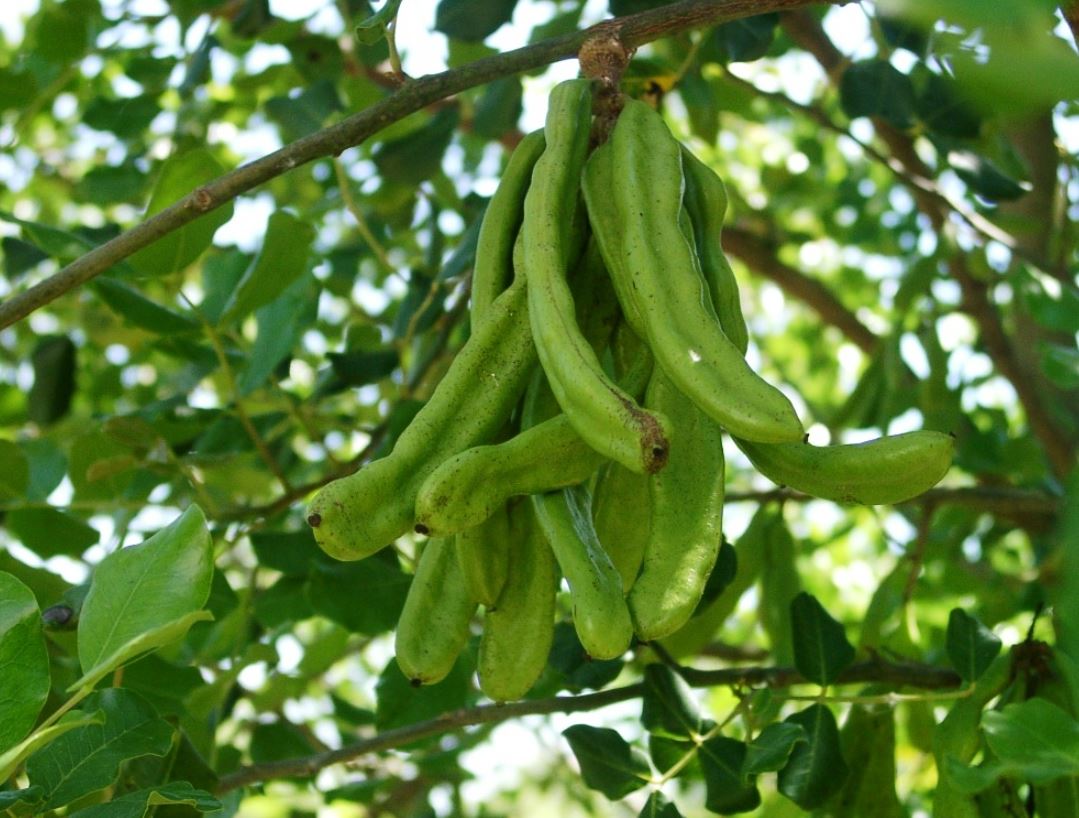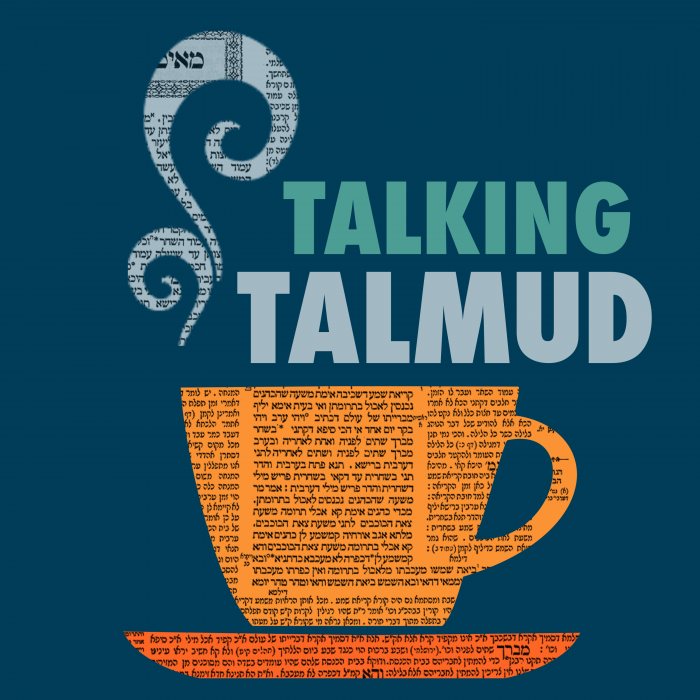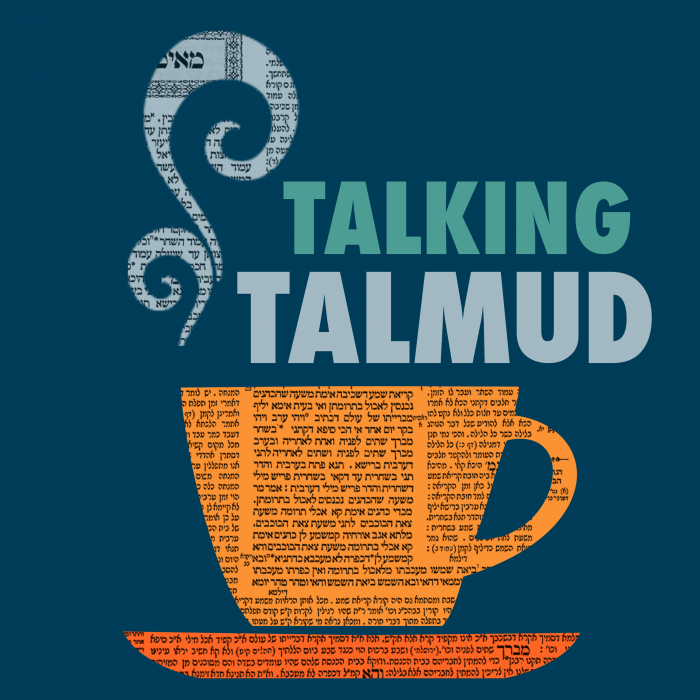Bava Batra 68
בִּימוֹת הַחַמָּה וּבִימוֹת הַגְּשָׁמִים, וְלֹא בֵּית כִּינּוּס הָעֵצִים. וְאִם אָמַר לוֹ: ״בֵּית הַמֶּרְחָץ וְכׇל תַּשְׁמִישָׁיו אֲנִי מוֹכֵר לָךְ״ – כּוּלָּן מְכוּרִין.
in the summer season or in the rainy season, nor has he sold him the storeroom for the wood. But if the seller says to the buyer: I am selling you the bathhouse and all of its accompaniments, all these components are sold.
הָהוּא דַּאֲמַר לֵיהּ לְחַבְרֵיהּ: ״בֵּית הַבַּד וְכׇל תַּשְׁמִישָׁיו אֲנִי מוֹכֵר לָךְ״. הֲוַיָא הָנְהוּ חַנְוָאתָא אַבָּרַאי, דַּהֲווֹ שָׁטְחוּ בְּהוּ שׁוּמְשְׁמֵי. אֲתָא לְקַמֵּיהּ דְּרַב יוֹסֵף,
The Gemara relates: There was a certain person who said to another: I am selling you this olive press and all of its accompaniments. There were certain stores outside of the olive press, where, in addition to the ordinary services that these stores provided, sesame seeds would also be spread out to dry before they would be pressed for their oil. The seller and the buyer disagreed about whether these stores were included in the sale, and the buyer came before Rav Yosef, presenting him with his claim to ownership of the stores.
אֲמַר לֵיהּ: תְּנֵינָא, אִם אָמַר: ״בֵּית הַמֶּרְחָץ וְכׇל תַּשְׁמִישָׁיו אֲנִי מוֹכֵר לָךְ״ – הֲרֵי כּוּלָּן מְכוּרִין. אֲמַר לֵיהּ אַבָּיֵי, וְהָא תָּנֵי רַבִּי חִיָּיא: אֵין כּוּלָּן מְכוּרִין! אֶלָּא אָמַר רַב אָשֵׁי: חָזֵינַן – אִי אֲמַר לֵיהּ: ״בֵּית הַבַּד וְכׇל תַּשְׁמִישָׁיו, וְאִלֵּין מִצְרָנַהָא״ – קָנֵי, וְאִי לָא – לָא קָנֵי.
Rav Yosef said to him: We learned in the previously cited baraita that if the seller says to the buyer: I am selling you the bathhouse and all of its accompaniments, all these components are sold. Rav Yosef held that in this case too, the disputed stores were sold. Abaye said to Rav Yosef: But didn’t Rabbi Ḥiyya teach in a baraita: They are not all sold? Rather, the issue should be resolved as Rav Ashi said: We consider the seller’s statement, and if he said to the buyer: I am selling you the olive press and all of its accompaniments, and these are its boundaries, and he included the area of the stores within those boundaries, the buyer has acquired those stores, but if the seller does not say this, he has not acquired them, as they are not actually part of the olive press.
מַתְנִי׳ הַמּוֹכֵר אֶת הָעִיר – מָכַר בָּתִּים; בּוֹרוֹת, שִׁיחִין וּמְעָרוֹת; מֶרְחֲצָאוֹת וְשׁוֹבָכוֹת; בֵּית הַבַּדִּין וּבֵית הַשְּׁלָחִין; אֲבָל לֹא אֶת הַמִּטַּלְטְלִין. וּבִזְמַן שֶׁאָמַר לוֹ: ״הִיא וְכׇל מַה שֶּׁבְּתוֹכָהּ״ – אֲפִילּוּ הָיוּ בָּהּ בְּהֵמָה וַעֲבָדִים, הֲרֵי כּוּלָּן מְכוּרִין. רַבָּן שִׁמְעוֹן בֶּן גַּמְלִיאֵל אוֹמֵר: הַמּוֹכֵר אֶת הָעִיר – מָכַר אֶת הַסַּנְטֵר.
MISHNA: One who sells a city without specifying what is included in the sale has sold with it the houses, the pits, the ditches and caves, the bathhouses and the dovecotes, and the olive presses and beit hashelaḥin, as will be explained in the Gemara, but he has not sold the movable property in the city. But when the seller says to the buyer: I am selling you it and everything that is in it, even if there were cattle and Canaanite slaves in the city, all these entities are sold. Rabban Shimon ben Gamliel says: One who sells a city has sold with it the santar, the meaning of which will be explained in the Gemara.
גְּמָ׳ אֲמַר לֵיהּ רַב אַחָא בְּרֵיהּ דְּרַב אַוְיָא לְרַב אָשֵׁי: שָׁמְעַתְּ מִינַּהּ, עַבְדָּא כְּמִטַּלְטְלָא דָּמֵי; דְּאִי כִּמְקַרְקַע דָּמֵי, נִיזְדַּבַּן אַגַּב מָתָא! וְאֶלָּא מַאי, עַבְדָּא כְּמִטַּלְטְלָא דָּמֵי?! מַאי אֲפִילּוּ?
GEMARA: Rav Aḥa, son of Rav Avya, said to Rav Ashi: Learn from the mishna that the legal status of a Canaanite slave is like that of movable property, as if it is like that of land, the slave should be sold along with the city. Rav Ashi responded: Rather, what do you claim, that the legal status of a Canaanite slave is like that of movable property? If that is the case, what is the meaning of the mishna’s statement that even if there were cattle and Canaanite slaves in the city, they are all sold? This is obvious, as the slaves should be treated no differently than the rest of the city’s movable property.
אֶלָּא מַאי אִית לָךְ לְמֵימַר – שָׁאנֵי בֵּין מִטַּלְטְלָא דְנָיֵיד מִמִּטַּלְטְלָא דְּלָא נָיֵיד; אֲפִילּוּ תֵּימָא עַבְדָּא כִּמְקַרְקַע דָּמֵי – שָׁאנֵי בֵּין מְקַרְקַע דְּנָיֵיד, לִמְקַרְקַע דְּלָא נָיֵיד.
Rather, what have you to say? You must explain that there is a difference between movable property that moves about by itself, such as slaves, and movable property that does not move about by itself, i.e., inanimate objects. In exactly the same manner, one can claim that even if you say that the legal status of a Canaanite slave is like that of land, there is a difference between land that moves about by itself, i.e., slaves, and land that does not move about by itself.
רַבָּן שִׁמְעוֹן בֶּן גַּמְלִיאֵל אוֹמֵר: הַמּוֹכֵר אֶת הָעִיר – מָכַר אֶת הַסַּנְטֵר. מַאי ״סַנְטֵר״? הָכָא תַּרְגִּימוּ: בַּר מַחְווֹנִיתָא. שִׁמְעוֹן בֶּן אַבְטוּלְמוֹס אוֹמֵר: בָּאגֵי. מַאן דְּאָמַר בַּר מַחְווֹנִיתָא – כׇּל שֶׁכֵּן בָּאגֵי; מַאן דְּאָמַר בָּאגֵי – אֲבָל בַּר מַחְווֹנִיתָא לָא מִיזְדַּבַּן.
§ The mishna teaches: Rabban Shimon ben Gamliel says: One who sells a city has sold with it the santar. The Gemara asks: What is the meaning of the term santar? Here in Babylonia they interpreted it to mean the land registrar [bar maḥavanita] in charge of keeping track of property boundaries. Shimon ben Avtolemos disagrees and says that it is referring to the fields that surround the city. The Gemara comments: The one who says that santar means the land registrar understands that according to Rabban Shimon ben Gamliel, when one sells a city, all the more so are the fields that surround the city included in the sale. But the one who says that it means the fields that surround the city holds that the land registrar is not sold with the city.
תְּנַן: בֵּית הַבַּדִּים וּבֵית הַשְּׁלָחִין. סַבְרוּהָ, מַאי ״שְׁלָחִין״ – בָּאגֵי, דִּכְתִיב: ״וְשֹׁלֵחַ מַיִם עַל פְּנֵי חוּצוֹת״; בִּשְׁלָמָא לְמַאן דְּאָמַר בַּר מַחְווֹנִיתָא – אֲמַר תַּנָּא קַמָּא: בָּאגֵי מִיזְדַּבְּנִי, בַּר מַחְווֹנִיתָא לָא מִיזְדַּבַּן; וַאֲתָא רַבָּן שִׁמְעוֹן בֶּן גַּמְלִיאֵל לְמֵימַר: אֲפִילּוּ בַּר מַחְווֹנִיתָא נָמֵי מִיזְדַּבַּן. אֶלָּא לְמַאן דְּאָמַר בָּאגֵי – תַּנָּא קַמָּא נָמֵי הָכִי קָאָמַר!
The Gemara attempts to adduce proof in support of one of the opinions: We learned in the mishna here that the olive presses and beit hashelaḥin are sold along with the city. The Sages initially maintained: What is meant by shelaḥin? This is referring to irrigated fields, fields that require additional irrigation to supplement the rain that they receive. As it is written: “Who gives rain upon the earth and sends [shole’aḥ] water upon the fields” (Job 5:10). Granted, according to the one who says that santar means the land registrar, the first tanna of the mishna said that the fields that surround the city are sold with the city, but the land registrar is not sold, and Rabban Shimon ben Gamliel comes to say that even the land registrar is sold. But according to the one who says that santar means fields, this is what the first tanna is saying as well. In what way, then, does Rabban Shimon ben Gamliel disagree with the first tanna?
מִי סָבְרַתְּ מַאי ״שְׁלָחִין״ – בָּאגֵי?! לָא; מַאי ״שְׁלָחִין״ – גִּינוּנְיָיתָא, שֶׁנֶּאֱמַר: ״שְׁלָחַיִךְ פַּרְדֵּס רִמּוֹנִים״; אֲבָל בָּאגֵי – לָא מִיזְדַּבְּנִי. וַאֲתָא רַבָּן שִׁמְעוֹן בֶּן גַּמְלִיאֵל לְמֵימַר: אֲפִילּוּ בָּאגֵי נָמֵי מִזְדַּבְּנִי.
The Gemara rejects this proof: Do you maintain that what is meant by shelaḥin is irrigated fields? This is not the case. Rather, what is meant by shelaḥin? This is referring to gardens found within the city, as it is stated: “Your shoots [shelaḥayikh] are an orchard of pomegranates” (Song of Songs 4:13). But the fields that surround the city are not sold. And Rabban Shimon ben Gamliel comes to say that even the fields are sold as well. This is one version of the discussion.
אִיכָּא דְּאָמְרִי: סַבְרוּהָ, מַאי ״שְׁלָחִין״ – גִּינוּנְיָאתָא; בִּשְׁלָמָא לְמַאן דְּאָמַר בָּאגֵי – אָמַר תַּנָּא קַמָּא: גְּנוּנָיְיָתָא מִיזְדַּבַּן, בָּאגֵי לָא מִיזְדַּבְּנִי; וַאֲתָא רַבָּן שִׁמְעוֹן בֶּן גַּמְלִיאֵל לְמֵימַר: אֲפִילּוּ בָּאגֵי מִיזְדַּבְּנִי.
Some say that the discussion took place as follows: The Sages initially assumed that what is meant by shelaḥin? This is referring to gardens found within the city. Granted, according to the one who said that santar means the fields that surround the city, the first tanna of the mishna said that the gardens found within the city are sold along with the city, but the fields that surround the city are not sold, and Rabban Shimon ben Gamliel comes to say that even the fields that surround the city are sold.
אֶלָּא לְמַאן דְּאָמַר בַּר מַחְווֹנִיתָא – אָמַר תַּנָּא קַמָּא: גִּינוּנְיָיתָא; וּמַהְדַּר לֵיהּ רַבָּן שִׁמְעוֹן בֶּן גַּמְלִיאֵל: בַּר מַחְווֹנִיתָא?! מִי סָבְרַתְּ מַאי ״שְׁלָחִין״ – גִּינוּנְיָיתָא?! לָא; מַאי ״שְׁלָחִין״ – בָּגֵי, דִּכְתִיב: ״וְשֹׁלֵחַ מַיִם עַל פְּנֵי חוּצוֹת״; אֲבָל בַּר מַחְווֹנִיתָא – לָא מִזְדַּבַּן. וַאֲתָא רַבָּן שִׁמְעוֹן בֶּן גַּמְלִיאֵל לְמֵימַר, דַּאֲפִילּוּ בַּר מַחְווֹנִיתָא נָמֵי מִזְדַּבַּן.
But according to the one who says that santar means the land registrar, is it reasonable that the first tanna of the mishna said that the gardens within the city are included in the sale of the city, and Rabban Shimon ben Gamliel responded to him that the land registrar is included? How are the two connected? The Gemara answers: Do you maintain that what is meant by shelaḥin is gardens? This is not the case. Rather, what is meant by shelaḥin? This is referring to the fields that surround the city, as it is written: “Who gives rain upon the earth and sends [sholeaḥ] waters upon the fields” (Job 5:10). According to the first tanna, it is specifically the fields that are sold with the city, but the land registrar is not sold. And Rabban Shimon ben Gamliel comes to say that even the land registrar is also sold.
תָּא שְׁמַע, רַבִּי יְהוּדָה אוֹמֵר: סַנְטֵר אֵינוֹ מָכוּר, אַנְקוּלְמוּס מָכוּר. מַאי, לָאו מִדְּאַנְקוּלְמוּס גַּבְרָא, סַנְטֵר נָמֵי גַּבְרָא? מִידֵּי אִירְיָא?! הָא כִּדְאִיתָא וְהָא כִּדְאִיתָא.
The Gemara suggests: Come and hear a proof from the following baraita: Rabbi Yehuda says: The santar is not sold with the city, but the city scribe [ankolemus] is sold with it. What, is it not clear from the fact that the city scribe is a man that the santar is also a man? The Gemara rejects this proof: Are the cases comparable? This case is as it is, and that case is as it is, and santar means fields, and not the land registrar.
וּמִי מָצֵית אָמְרַתְּ הָכִי? וְהָא קָתָנֵי סֵיפָא: אֲבָל לֹא שְׁיָירֶיהָ וְלֹא בְּנוֹתֶיהָ, וְלֹא חוֹרָשִׁין הַמּוּקְצִין לָהּ, וְלֹא בֵּיבָרִין שֶׁל חַיָּה וְשֶׁל עוֹפוֹת וְשֶׁל דָּגִים. וְאָמְרִינַן: מַאי ״שְׁיָירֶיהָ״? בִּיזְלֵי. מַאי בִּיזְלֵי? אָמַר רַבִּי אַבָּא: פִּיסְקֵי בָּגֵי. פִּיסְקֵי בָּגֵי הוּא דְּלָא מִזְדַּבְּנִי, הָא בָּגֵי עַצְמָן – מִזְדַּבְּנִי!
The Gemara asks: How can you say that according to Rabbi Yehuda the fields surrounding the city are not sold along with it? But isn’t it taught in the latter clause of this baraita: But when one sells a city he has not sold its remnants, and not its daughters, i.e., the nearby rural villages, and not the woods that are set aside and designated for the city, and not the enclosures [beivarin] for animals, for birds, and for fish. And we said in explanation: What is meant by its remnants? Bizlei. The Gemara asks: What is the meaning of bizlei? Rabbi Abba said: The strips of the fields that are separated from the main fields by a stretch that cannot be cultivated. From here, it may be inferred that it is the strips of the fields that are not sold with the city, but the fields themselves are sold with it.
אֵיפוֹךְ – רַבִּי יְהוּדָה אוֹמֵר: סַנְטֵר – מָכוּר, אַנְקוּלְמוֹס – אֵינוֹ מָכוּר.
The Gemara suggests: Reverse the statement found in the baraita so that Rabbi Yehuda says that the santar, now understood to mean fields, is sold with the city, but the city scribe is not sold with it.
וּמִי מָצֵית אָמְרַתְּ רַבִּי יְהוּדָה – כְּרַבָּן שִׁמְעוֹן בֶּן גַּמְלִיאֵל סְבִירָא לֵיהּ? וְהָא רַבִּי יְהוּדָה כְּרַבָּנַן סְבִירָא לֵיהּ! דְּקָתָנֵי סֵיפָא: אֲבָל לֹא שְׁיָירֶיהָ וְלֹא בְּנוֹתֶיהָ. וְאִילּוּ רַבָּן שִׁמְעוֹן בֶּן גַּמְלִיאֵל, הָאָמַר: מָכַר אֶת הָעִיר – מָכַר בְּנוֹתֶיהָ! דְּתַנְיָא: הַמּוֹכֵר אֶת הָעִיר – לָא מָכַר אֶת בְּנוֹתֶיהָ. רַבָּן שִׁמְעוֹן בֶּן גַּמְלִיאֵל אוֹמֵר: הַמּוֹכֵר אֶת הָעִיר – מָכַר בְּנוֹתֶיהָ!
The Gemara asks: How can you say that Rabbi Yehuda holds in accordance with the opinion of Rabban Shimon ben Gamliel, to the point that you adduce proof from the words of Rabbi Yehuda with regard to the opinion of Rabban Shimon ben Gamliel? But doesn’t Rabbi Yehuda hold in accordance with the opinion of the Rabbis? As it is taught in the latter clause of that same baraita: But when one sells a city he does not sell its remnants, and he does not sell its daughters, i.e., the nearby rural villages. Whereas with regard to Rabban Shimon ben Gamliel, doesn’t he say that one who sold a city sold its daughters along with it, i.e., the nearby rural villages, as it is taught in a baraita: One who sells a city has not sold its daughters; Rabban Shimon ben Gamliel disagrees and says: One who sells a city has sold its daughters.
רַבִּי יְהוּדָה סָבַר לֵיהּ כְּווֹתֵיהּ בַּחֲדָא, וּפְלִיג עֲלֵיהּ בַּחֲדָא.
The Gemara answers: This does not prove that Rabbi Yehuda disagrees with Rabban Shimon ben Gamliel, as it may be suggested that Rabbi Yehuda holds in accordance with the opinion of Rabban Shimon ben Gamliel with regard to one issue, that the fields that surround the city are included in the sale, and disagrees with him with regard to another issue, as according to Rabbi Yehuda the nearby villages are not sold along with the city.
וְלֹא בֵּיבָרִין שֶׁל חַיָּה וְשֶׁל עוֹפוֹת וְשֶׁל דָּגִים. וּרְמִינְהִי: הָיוּ לָהּ בָּנוֹת – אֵין נִמְכָּרוֹת עִמָּהּ. הָיָה לָהּ חֵלֶק אֶחָד בַּיָּם וְחֵלֶק אֶחָד בַּיַּבָּשָׁה; בֵּיבָרִים שֶׁל חַיָּה וְשֶׁל עוֹפוֹת וְשֶׁל דָּגִים – הֲרֵי אֵלּוּ נִמְכָּרִים עִמָּהּ!
§ The baraita teaches: When one sells a city he has not sold, among other things, the enclosures for animals, for birds, and for fish. And the Gemara raises a contradiction from another baraita: If the city has daughters, i.e., nearby villages, they are not sold along with it. If it has one part on the sea and one part on dry land, or if it has enclosures for animals, for birds, or for fish, these are all sold along with the city.
לָא קַשְׁיָא; הָא דִּנְגִיחַ קַאיְהִי לְגָו, וְהָא דִּנְגִיחַ קַאיְהִי לְבַר. וְהָא קָא תָנֵי: וְלֹא אֶת חוֹרָשִׁין הַמּוּקְצִין לָהּ! אֵימָא: הַמּוּקְצִין הֵימֶנָּה.
The Gemara answers that this is not difficult, as a distinction can be made between different cases: Here, the one baraita addresses animal enclosures whose openings face inward, i.e., toward the city, and they are therefore considered a part of the city, whereas there, the other baraita addresses animal enclosures whose openings face outward, i.e., away from the city, and therefore they are not included in its sale. The Gemara raises a difficulty: But doesn’t the baraita teach: And he has not sold the woods that are set aside for the city, indicating that they face the city, and nevertheless they are not sold along with the city? The Gemara answers: Say that the baraita should be emended so that it reads instead: And he has not sold the woods that are set apart from the city, i.e., that are at a distance and do not face the city.
מַתְנִי׳ הַמּוֹכֵר אֶת הַשָּׂדֶה – מָכַר אֶת הָאֲבָנִים שֶׁהֵם לְצׇרְכָּהּ, וְאֶת הַקָּנִים שֶׁבַּכֶּרֶם שֶׁהֵם לְצׇרְכּוֹ, וְאֶת הַתְּבוּאָה שֶׁהִיא מְחוּבֶּרֶת לַקַּרְקַע, וְאֶת חִיצַת הַקָּנִים שֶׁהִיא פְּחוּתָה מִבֵּית רוֹבַע, וְאֶת הַשּׁוֹמֵירָה שֶׁאֵינָהּ עֲשׂוּיָה בְּטִיט, וְאֶת הֶחָרוּב שֶׁאֵינוֹ מוּרְכָּב, וְאֶת בְּתוּלַת הַשִּׁקְמָה.
MISHNA: One who sells a field without specifying what is included in the sale has sold the stones in the field that are for its use, and the reeds in the vineyard that are for its use, and the produce that is still attached to the ground, and the cluster of reeds that occupy less than the area required for sowing a quarter-kav of seed [beit rova], and the watch station that is not plastered with clay, and the young carob tree that has not yet been grafted, and the untrimmed sycamore that is still young.
אֲבָל לֹא מָכַר לֹא אֶת הָאֲבָנִים שֶׁאֵינָן לְצׇרְכָּהּ, וְלֹא אֶת הַקָּנִים שֶׁבַּכֶּרֶם שֶׁאֵינָן לְצׇרְכּוֹ, וְלֹא אֶת הַתְּבוּאָה שֶׁהִיא תְּלוּשָׁה מִן הַקַּרְקַע. בִּזְמַן שֶׁאָמַר לוֹ: ״הִיא וְכׇל מַה שֶּׁבְּתוֹכָהּ״ – הֲרֵי כּוּלָּן מְכוּרִין. בֵּין כָּךְ וּבֵין כָּךְ – לֹא מָכַר לֹא אֶת חִיצַת הַקָּנִים שֶׁהִיא בֵּית רוֹבַע, וְלֹא אֶת הַשּׁוֹמֵירָה שֶׁהִיא עֲשׂוּיָה בְּטִיט, וְלֹא אֶת הֶחָרוּב הַמּוּרְכָּב, וְלֹא אֶת סַדַּן הַשִּׁקְמָה.
But he has not sold along with the field the stones that are not designated for use in the field, and not the reeds in the vineyard that are not designated for its use, and not the produce that is already detached from the ground. When the seller says to the buyer: I am selling you it and everything that is in it, all these components are sold along with the field. Both in this case, where he executes the sale without specification, and in that case, where he adds the phrase that he is selling everything that is in the field, he has not sold the cluster of reeds that occupy a beit rova or more, as they are considered a separate field, and he has not sold the watch station that is plastered with clay, and not the carob tree that has been grafted, and not the sycamore trunk. All of these entities are significant in their own right and have a status independent from that of the fields, and they are therefore not included in the sale of the field.
























